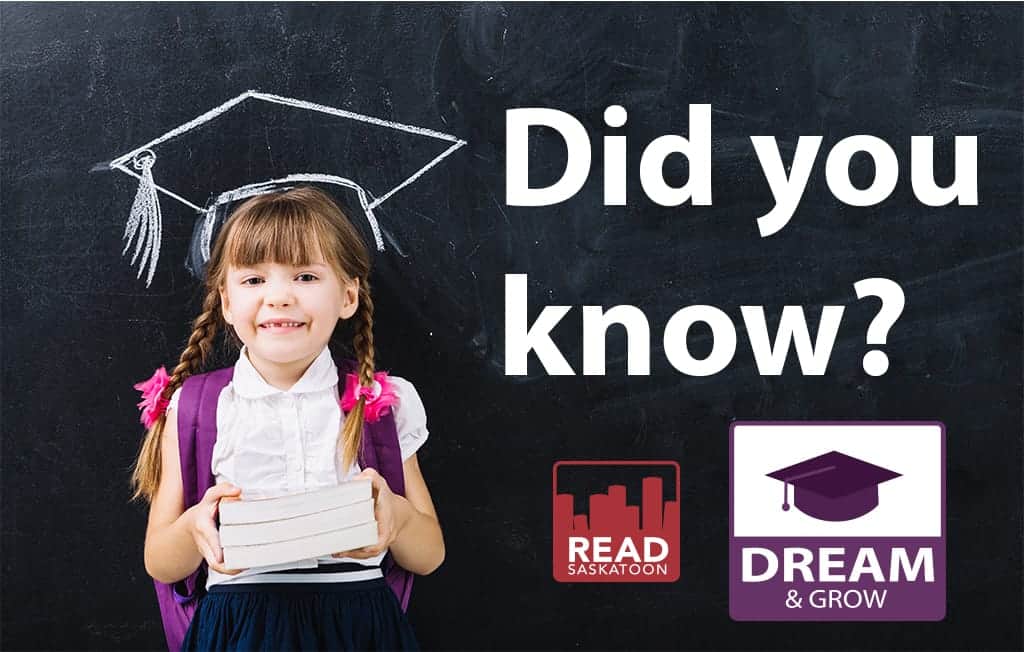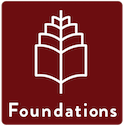Blog
Strong literacy skills are the foundation– they do not happen by chance
0 CommentDaily observations made at READ Saskatoon reinforce what literacy-based research has revealed: the correlation between “a lack of education and poverty is a proven fact.”[1] Not attending post-secondary has been identified as one of the factors that makes entering the job market difficult, and consequently contributes to persistent poverty. Post-secondary education, along with increased literacy, language and numeracy skills, is critical for those living on lower incomes. However, for many of our clients, financial barriers place post-secondary education out of reach. In 2018, 36% of Canadian students who completed high school did not pursue post-secondary studies because of a financial barrier.[2]

In early July, Statistics Canada released a report that aimed to answer the question: Why are Lower- Income Parents Less Likely to Open an RESP Account? It comes as no surprise that “wealth is the single most important factor behind the gap in RESP participation” (33). What did come as a surprise is that research found that “demonstrated differences in literacy and numeracy played smaller, statistically insignificant roles” (5). This finding is peculiar since statistics gathered over the years from our financial literacy programs point to a significant association between proficiency in literacy and successfully accessing financial products and resources.
The Canada Learning Bond and Canada Education Savings Grant play important roles in creating access to higher education. RESPs make it easier to save for post-secondary, but there are other proven positive changes that happen when an RESP is opened in a child’s name. High school completion, post-secondary enrollment, and dramatically increased grades are other important changes that take place when children understand that investments are being made in their futures.
But as the July report demonstrates, despite the benefits of RESPs, participation among low-income families remains minimal. Other research agrees confirming participation of low-income families at 30%, and Canada Learning Bond uptake at 29%[3], even though families can access up to $2,000 per child and there is no requirement of a personal contribution. Our experience tells us that low-income families face unique barriers to opening RESPs. In addition to limited disposable income, quite often they do not have networks, confidence, time, connections with financial institutions, or support required to open RESPs for their children. As one parent stated: “I had to set up two appointments, very inconvenient, and it wasn’t my fault they forgot to get a signature. Then I had to haul my kids downtown on the bus (and it’s not easy to do) for their mistake”.
We need to move beyond the dichotomy of policy vs programming. Increasing RESP uptake in low-income families would be more effective by partnering with groups that demonstrate positive outcomes in literacy, language, numeracy, and financial literacy: “Before this program, I didn’t know there were options other than a chequing or savings account” (Parent, READ Saskatoon financial literacy program). READ Saskatoon can be a strong partner in the delivery of these much-needed programs in Saskatoon and the province at large. After all, we have a 40-year history to prove it.
Our achievements as an organization are demonstrated through the quantifiable results of our program successes, as well as the experiences of families that access our financial literacy programming. Our experience shows that on their own, there are too many pieces to navigate – some related to literacy, but some related to factors mentioned earlier: “This program is everything. I get to save for my kids. I love being told that budgeting will feel good. I will feel empowered by saving money” (Participant in Match Savings Program). Today, with the commitment of hundreds of volunteers, donors, and corporate partners, we offer free adult, family, and financial literacy programs, as well as financial literacy facilitator training and resources.
Upon closing their paper, the researchers state the next step would be to ask, “To what extent can raising literacy, numeracy and financial literacy early in a person’s life lead to a higher probability of opening an RESP account?” (33). We challenge them to alter their question: “To what extent can increasing literacy and numeracy skills raise income levels for Canadians, and in turn increase the probability of opening an RESP account?” Strong literacy skills are the foundation– they do not happen by chance. We can no longer skip over the important role they play in creating opportunities. READ Saskatoon, and other community literacy organizations, are a part of creating and maintaining that foundation.
[1] Kovacs, Nicole and Laura McDiarmid. (2013). (Citing Rushowy, Kristin and Louise Brown, 2010.) Youth literacy programs: A review of the literature. London, ON: Child and Youth Network. Page 21. Retrieved from: http://londoncyn.ca/wp-content/uploads/2012/07/Literacy-Programs-A-Review-of-the-Literature-Final-Designed- Copy-2.pdf
[2] Canada. Statistics Canada. Access and Support to Education and Training survey. 2008, cited iGlobal Growth Assets Inc. “Registered Education Savings Plan (RESP),” http://globalgrowth.ca/marketing/new/RESP%20Fact%20sheet.pdf
[3] ibid

